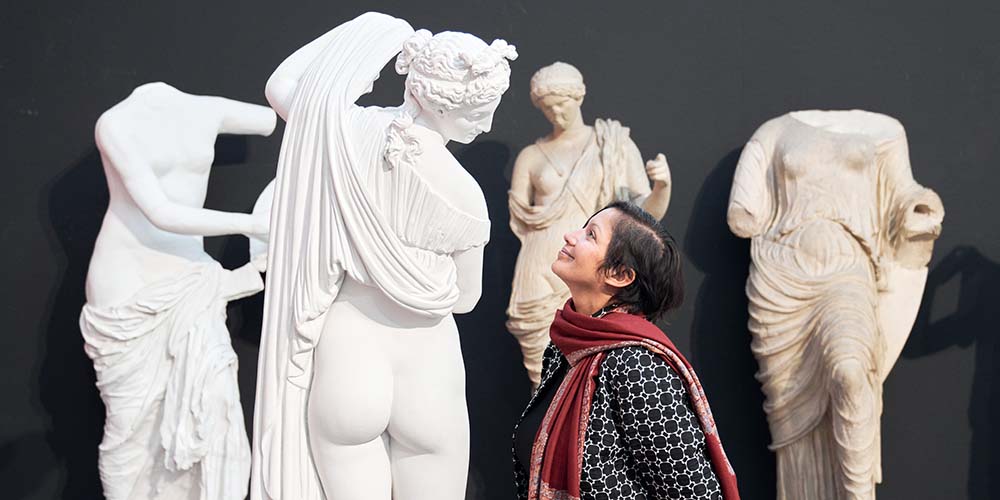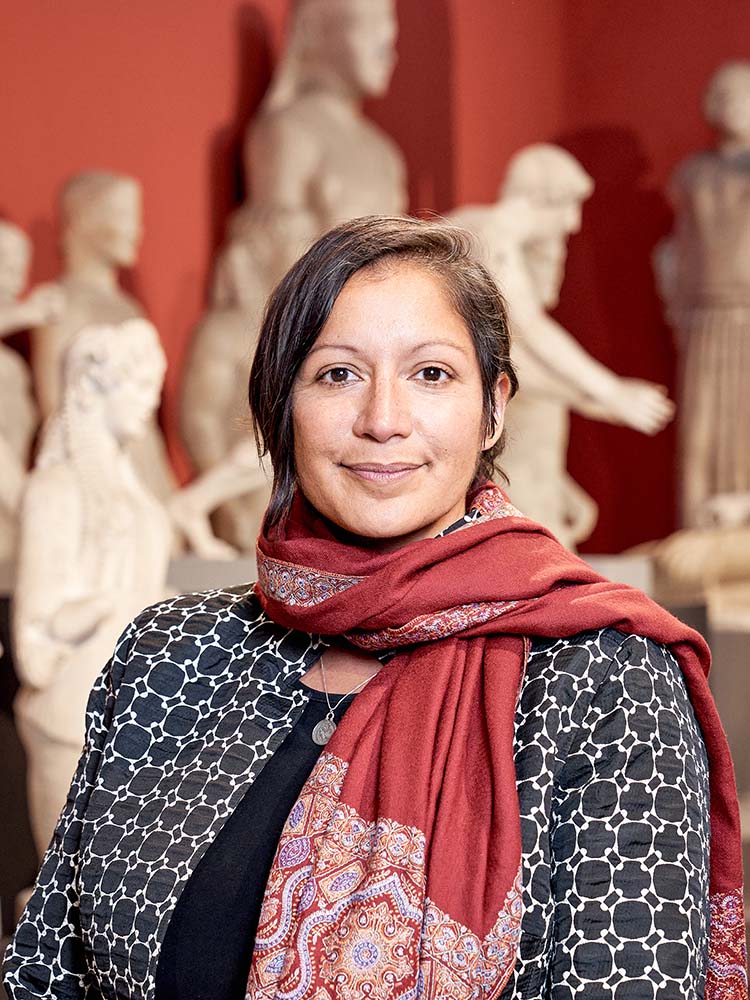Your gods are also mine
The Romans once ruled the entire Mediterranean region. How did they handle the diversity in their realm? And what can we learn from this? Latinist Nandini Pandey is looking for answers.
02 November 2021
From the Iberian Peninsula to Mesopotamia and from North Africa to Hadrian’s Wall in England, the Roman Empire reached its greatest extent in 117 CE, uniting various ethnic groups and people of all colors. Skin color said nothing about the social class to which a person belonged. “Rome wasn’t white,” says Dr. Nandini Pandey. “The image of the white master and the black slave has its origins in colonialism, in a case of recent history overlaying the more distant past.”
For her monograph with the working title Diversitas: Negotiating Difference in Imperial Rome, Pandey is studying approaches to diversity within the Roman Empire. The associate professor at the University of Wisconsin-Madison is currently researching at the University of Basel for two months as part of a Fellowship in Latin Literature (see box). “The library is very well equipped. I’ve found every book I need for my work,” she says happily.
Integration, not exclusion
The Latinist believes we can learn a great deal from the Roman approach to diversity: “The Romans relied on inclusion as much as repression.” The latter would have required a huge number of soldiers and provoked riots and unrest. It was easier to simply integrate the deities of new peoples into the Roman pantheon than to stamp them out. “The idea was that gods favorably disposed towards Rome would protect the Empire -- the more the merrier, so to speak.”
Nor were conquered people considered biologically inferior; they were often much admired, as we see in Rome’s love for Greek art. The Empire even allowed some conquered people to become Roman citizens, and thus had a remarkably permeable model of social belonging. “This made people all over the Empire feel connected to Rome, which in turn strengthened their loyalty,” says the American classicist.
However, she does not want to glorify the past: “There’s no denying that there was also a lot of violence, inequality and discrimination.” But she believes we can learn a thing or two from the Romans when we come into contact with people from different backgrounds. “We should treat migrants with respect, be grateful for what they do, and give them better opportunities for inclusion and advancement. We rely on these people – they often do the work no one else wants to. We need them in our society and they should also be considered part of it,” she points out.
After all, we each have different identities – private, professional, geographical – and we were all immigrants at some point in our history. This also applies to Pandey. A daughter of Indian-American immigrants to New York, she has enjoyed US citizenship since birth, and yet still faces questions about identity and belonging in her country and her academic field. She reveals that her own experiences will feature in the book.
Diversity as a marketing strategy
In the Roman Empire, multi-ethnic marriages and consequently families were not uncommon. Diversity was part of everyday life, every household a diverse microcosm which might include goods and people from distant territories. They were both representatives of and sources of information for these regions. “The Romans were extremely proud of this diversity in their Empire,” says Pandey.
Bringing together and displaying tokens of the Empire’s variety demonstrated sophistication and cosmopolitanism: Exotic animals in the amphitheater, imported foods on a dinner table, colorful stones in a mosaic, but also foreign slaves were collected like trophies. “This was of course also a demonstration of power and should be viewed with a critical eye,” emphasizes Pandey. This principle still applies today, she adds: “When an American university boasts about how many different countries its students come from, this figure is used first and foremost as a status symbol. Diversity is sometimes about marketing, with the people behind it a kind of collectible.”
When Pandey tells stories, the dust of ancient languages is blown away. Or, as she puts it: “As long as we read these texts and they have something to say to us, they remain alive, and with them the ‘dead’ languages themselves.”
Basel Fellowships in Latin Literature
In addition to Nandini Pandey, another two fellows are currently at the University of Basel, Anna Anguissola and Ábel Tamás.
In collaboration with the foundation Patrum Lumen Sustine (PLuS), the Department of Latin Literature has established the Basel Fellowships in Latin Literature.
This visiting fellowship program offers an opportunity for early career researchers as well as established scholars to pursue their research in the framework of a fully funded visit of up to three months at the Departement Altertumswissenschaften of the University of Basel. During their stay, Visiting Fellows are entitled to make full use of the excellent resources of the University Library as well as the departmental library, Bibliothek Altertumswissenschaften, one of the world’s leading research libraries for the study of Ancient Mediterranean Civilizations and Classics.
The Fellowship’s main objective is to offer Fellows a period of exclusive research time. However, visiting Fellows are expected to present a paper on their research project, and they are invited to participate in the various research colloquia and other events at the Departement Altertumswissenschaften.
Basel Fellows are appointed by the program’s international Scientific Board.




